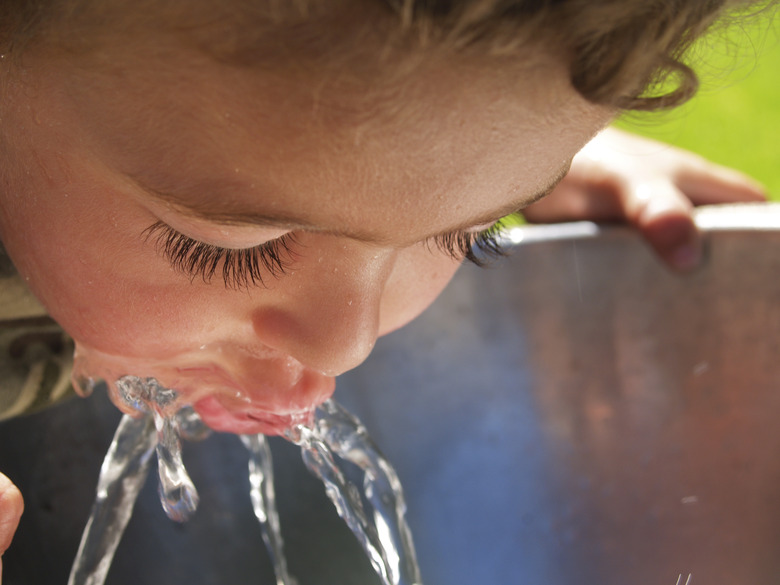What Part Of The Nephron Is Responsible For The Reabsorption Of Water?
Human kidneys contain more than a million nephrons, or individual filtration units. Each nephron is made up of renal tubules and blood vessels, which pass substances back and forth in order to filter wastes and preserve water balance in the body. Key structures within these nephrons remove water from the bloodstream and then allow it to be reabsorbed back into the body as needed.
The Glomerulus
The Glomerulus
The glomerulus filters water out of the bloodstream. At this stage, waste products and other substances such as salt and glucose accompany the water. The filtered substances enter Bowman's capsule, and from there, the renal tubules. Unless these substances are reabsorbed in later segments of the nephron, they will be excreted from the body.
The Proximal Convoluted Tubule
The Proximal Convoluted Tubule
The first part of the nephron that is responsible for water reabsorption is the proximal convoluted tubule. Filtered fluid enters the proximal tubule from Bowman's capsule. Many substances that the body needs, which may have been filtered out of the blood at the glomerulus, are reabsorbed into the body in this segment. As these other substances are reabsorbed, water is also reabsorbed through osmosis.
The Loop of Henle
The Loop of Henle
The next site of water reabsorption is in the loop of Henle. The loop of Henle is shaped like a "U", with a descending limb and an ascending limb. Filtered fluid first passes through the descending limb. Here, water flows out of the tubule into the surrounding tissue, as the walls of the nephron are permeable to water in this part of the structure. The surrounding tissue is now more dilute than the filtered fluid in the tubule. As a result, the filtered fluid loses salt as it passes through the ascending limb.
The Distal Convoluted Tubule
The Distal Convoluted Tubule
The distal convoluted tubule is critical to maintaining water balance in the body under changing conditions. The amount of reabsorption in this structure is controlled by hormones which adjust the permeability of the tubule walls to water. This allows for the reabsorption of more or less water, according to the needs of the body.
Cite This Article
MLA
Cois, Kim. "What Part Of The Nephron Is Responsible For The Reabsorption Of Water?" sciencing.com, https://www.sciencing.com/part-nephron-responsible-reabsorption-water-8515890/. 1 June 2018.
APA
Cois, Kim. (2018, June 1). What Part Of The Nephron Is Responsible For The Reabsorption Of Water?. sciencing.com. Retrieved from https://www.sciencing.com/part-nephron-responsible-reabsorption-water-8515890/
Chicago
Cois, Kim. What Part Of The Nephron Is Responsible For The Reabsorption Of Water? last modified March 24, 2022. https://www.sciencing.com/part-nephron-responsible-reabsorption-water-8515890/
